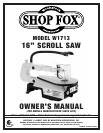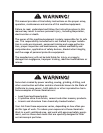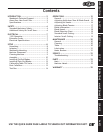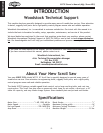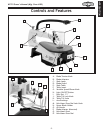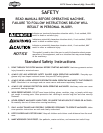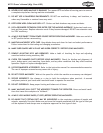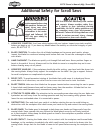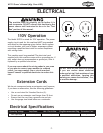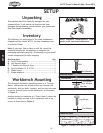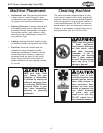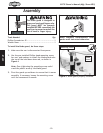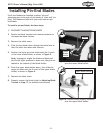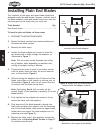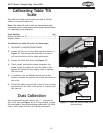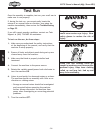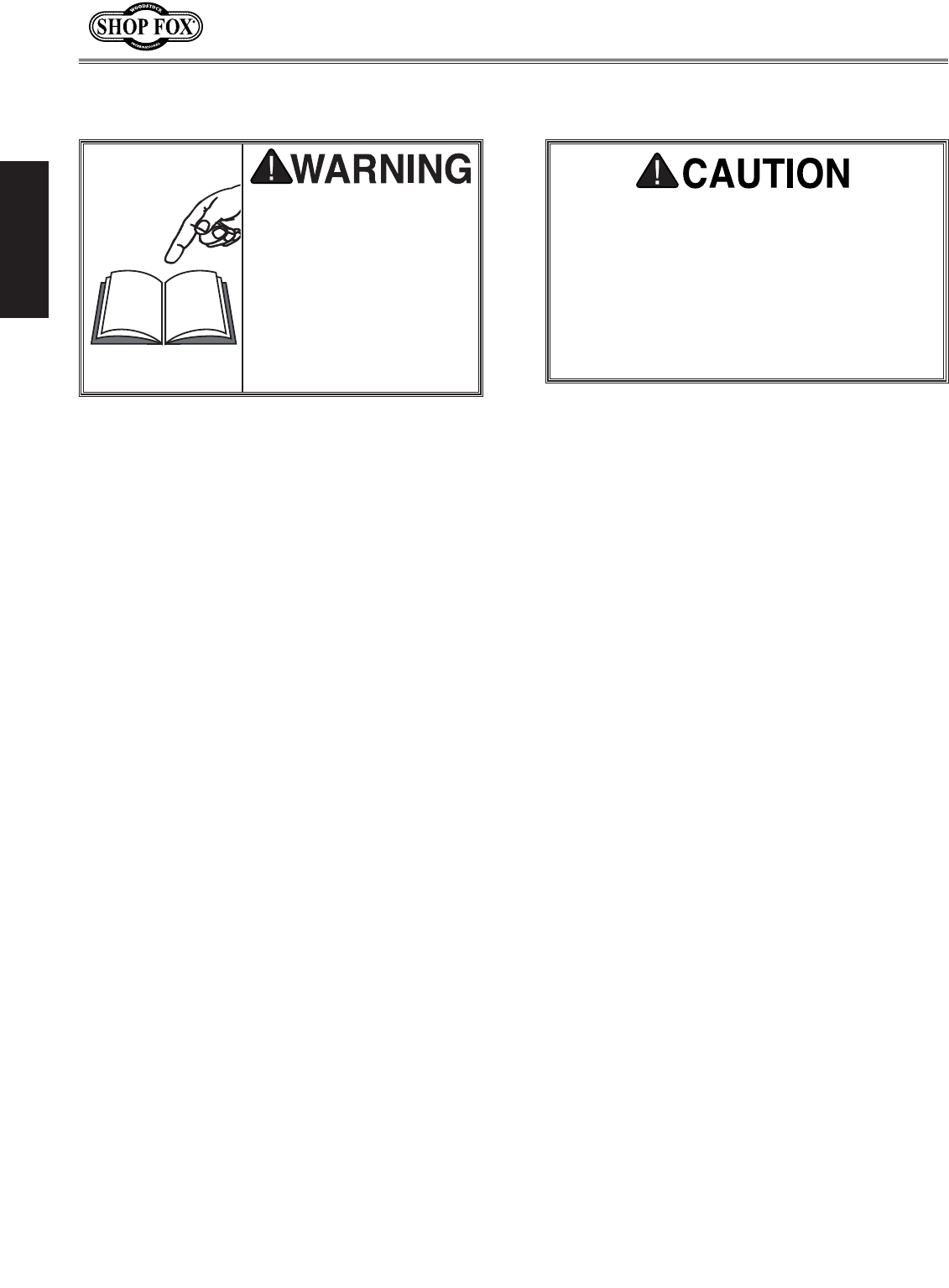
-6-
W1713 Owner's Manual (Mfg. Since 6/03)
SAFETY
Additional Safety for Scroll Saws
READ and understand this
entire manual before using
this machine. Serious per-
sonal injury may occur
if safety and operational
information is not under-
stood and followed. DO
NOT risk your safety by
not reading!
1. WORKPIECE CONDITION. Scroll saw safety begins with your lumber. Inspect your stock carefully
before you begin a cut. If you have any doubts about the stability or structural integrity of your
stock, DO NOT CUT IT!
2. BLADE CONDITION. To reduce the risk of blade breakage and to ensure good results, always
inspect the blade for cracks and missing teeth before each use. Do not use a damaged or badly
worn blade.
3. HAND PLACEMENT. The blade can quickly cut through flesh and bone. Never position fingers or
hands in the path of the cut. Always wait for the blade to come to a complete stop on its own
before clearing away cut-off pieces.
4. WORKPIECE HANDLING. If the workpiece should slip while cutting, your hand could be drawn into
the moving blade. Always firmly support the workpiece on the table. Use jigs or support fixtures
for small workpieces or complicated cut patterns.
5. RELIEF CUTS. To avoid excessive twisting of the blade that could cause it to break and throw
metal debris in all directions, use relief cuts for curve cuts that tend to twist the blade.
6. BLADE TENSION. Make sure that blade has the proper tension before connecting the saw to power.
A loose blade could become loose and be thrown away from the machine. A blade that has too
much tension could become overly stressed and break apart.
7. ATTENTION TO WORK AREA. Pay attention to the surrounding area when using the saw. Make sure
bystanders are well away from the cutting operation and they are wearing safety glasses. Never
leave the saw unattended when it is connected to power.
8. OBSTRUCTIONS. Plan and check your path of cut before starting the saw to avoid hitting an
obstruction with the workpiece that could cause your hands to slip and contact the moving blade.
9. BLADE GUARD. The blade guard is designed to help keep your hands and fingers safe from the
moving blade. Never operate this saw without the blade guard correctly and firmly installed
as it was intended. Always keep the blade guard as close to the workpiece as possible without
interfering with movement.
10. BLADE CONTACT. Starting the blade when it is in contact with the workpiece could cause blade
breakage, or the workpiece to suddenly slip which could cause your hands to be drawn into the
moving blade. Always wait for the blade to come to full speed before moving the workpiece into
it.
USE this and other machinery with caution
and respect. Always consider safety first,
as it applies to your individual working
conditions. No list of safety guidelines can
be complete—every shop environment is
different. Failure to follow guidelines could
result in serious personal injury, damage
to equipment or poor work results.



